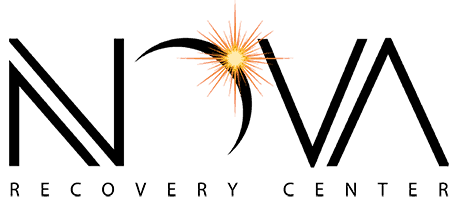Rethinking Prison for Drug Offenders: Alternatives to Incarceration
Last Updated on October 23, 2023
Jail and prison overcrowding are a major problem in the U.S. today. Our country accounts for five percent of the world’s population, but we house 25 percent of the world’s prisoners, according to the ACLU of Texas1.
Table of contents
- Nonviolent Drug Offenses and Incarceration
- The Effects of Incarceration on the Individual and Family
- The Effects of Incarceration on the Community
- Most Predictive Factors for Re-Arrest and How Incarceration Alternatives Help
- Increased Public Safety and Cost Savings: Incarceration Alternatives
- Community Supervision with Treatment Programs
- Progressive Sanctions for Low-Level Drug Offenders
- Drug Courts
- County Diversion Programs
- Travis County SHORT Program
- Travis County SMART Program
- Harris County Felony Pretrial Intervention
- Harris County First Chance Intervention Program
- Harris County STAR Program
- The Benefits of Treatment for Nonviolent Drug Offenders
Largely driven by the “war on drugs” in the 1980s and the “tough on crime” policies of the 1990s, America’s prisons are overflowing with nonviolent offenders. Fueled by the privatization of prisons and the huge profits gained from filling them to the brim, prison populations include the mentally ill, the elderly, the drug addicted and children charged as adults.
Prison populations include the mentally ill, the elderly, the drug addicted and children charged as adults.
Texas accounts for the fourth highest incarceration rate in the country, and the state has felt the brunt of prison and jail overcrowding. With an astronomical $3.1 billion annual corrections budget, the state spends seven times more money on incarceration than on higher education. Between 1980 and 2004, the population of Texas’ 94 prisons and 20 state jails increased by 556 percent, and corrections spending increased by 1,600 percent1.
The high price tag of corrections and the current state of prison and jail overcrowding in Texas have lawmakers and policymakers looking at ways to reduce prison and jail populations. One important trend of offering alternatives to incarceration for drug offenders has saved the state enormous amounts of money while strengthening families and communities and addressing a broad range of social problems.
Looking for treatment for you or a loved one?
Nova Recovery Center can help!
Call (512) 605-2955 today to learn about our outpatient and inpatient options.
Nonviolent Drug Offenses and Incarceration
According to the Texas Criminal Justice Coalition, 45 percent of individuals incarcerated in Texas are serving time for non-violent, non-sexually based offenses2. Of the 20,313 Texans in prison and the 3,893 people in state jail for a drug offense, 51 percent and 87 percent respectively were incarcerated for simple drug possession, not delivery or other drug-related offenses.
Not surprisingly, research shows that prison or jail time doesn’t serve to reduce criminal behavior or prevent recidivism (re-arrest) after initial release. Thirty-one percent of people leaving state jails and 23 percent of those leaving prison are re-incarcerated within three years of release. The vast majority of those who re-offend after release were initially sentenced for a non-violent offense, demonstrating that incarceration fails to address non-violent criminal behavior in particular.
Research shows that prison or jail time doesn’t serve to reduce criminal behavior or prevent re-arrest after initial release.
The Effects of Incarceration on the Individual and Family
Every year, an estimated 65,000 Texas inmates leave prison and return to their communities, but the life they return to is often fraught with problems. Imprisonment has a deep impact on an individual and his or her family, and researchers point out that in many cases, incarceration does more harm than good. This is especially true in families and communities of color, which are disproportionately affected by the negative effects of serving time.
According to the Council on Crime and Justice, negative effects of incarceration for the individual include financial difficulties, emotional trauma, difficulty finding employment and housing and difficulty transitioning into functional environments upon release3. They face stigma and distrust in the neighborhood and larger community, and this leads to alienation and isolation.
According to the U.S. Department of Health and Human Services, the children of those incarcerated often grow up to mistrust public authority4. They suffer from insecure attachments to the incarcerated parent, which leads to negative outcomes such as:
- Emotional and psychological problems
- Anxiety and depression
- Anger and aggression
- Problems with peer relationships
- Poor school performance
Suspension and dropout rates are higher among children who have an incarcerated parent, and many suffer from social isolation and alienation.
The Effects of Incarceration on the Community
Neighborhoods and entire communities are also deeply affected by incarceration. Communities where incarceration rates are high often gain poor reputations that deter economic development and negatively impact the available jobs and resources that are the hallmark of a healthy community. Neighborhoods and communities impacted by high incarceration rates often lose their sense of self-worth and become alienated from the larger community, reinforcing social and political isolation as well as hopelessness and helplessness among residents.
Disenfranchised youth in these communities develop negative attitudes toward work, responsibility and authority, and criminal activity becomes the norm, especially when employment opportunities are scarce. This creates a vicious cycle of crime, incarceration and recidivism.
Most Predictive Factors for Re-Arrest and How Incarceration Alternatives Help
According to the Dallas County Probation Department, the most predictive factors of re-arrest include:
- Education or employment problems
- Family and marital problems
- Emotional and mental health problems
- Alcohol and drug problems
- Criminal companions
- Criminal attitude
- Too much leisure time
- Unstable housing
Incarceration alternatives attempt to address all of these issues to prevent recidivism and improve lives. These efforts prove that easing prison overcrowding and saving the state money aren’t the only benefits that come from offering alternatives to incarceration for nonviolent drug offenders.
Looking for treatment for you or a loved one?
Nova Recovery Center can help!
Call (512) 605-2955 today to learn about our outpatient and inpatient options.
Increased Public Safety and Cost Savings: Incarceration Alternatives

Prioritizing smart strategies to reduce the jail and prison populations in Texas has been an ongoing mission for a bipartisan group of state legislators who implemented progressive sanctions for drug offenses in 2003, funded diversion programs for probation departments to reduce revocations in 2005 and began investing in treatment and diversion programs in 2007.
Common alternatives to incarceration include community supervision with treatment programs, progressive sanctions and drug courts.
Between 2003 and 2011, Texas enjoyed a 26.1 percent reduction in violent crime, and the state has saved nearly $2 billion since 2007 through a reduction in incarceration.
These steps are heavily supported by the public. A 2012 nationwide survey by the Pew Center on the States found that both conservative and liberal voters overwhelmingly support a number of policy changes that involve incarceration alternatives for non-violent offenders as well as sentencing and corrections reforms that include shorter prison terms.
Common alternatives to incarceration include community supervision with treatment programs, progressive sanctions and drug courts.
Community Supervision with Treatment Programs
The state jail system in Texas was initially designed to ease overcrowded prisons by housing low-level property or drug offenders who were noncompliant with a probation sentence. But various statutory changes over the years have led to scores of such individuals being sentenced directly to jail, where access to treatment is sorely limited and high re-offending rates are the norm.
Community supervision, or probation, is one alternative to incarceration for drug offenders that can make a big difference in the state’s bottom line and in countless individuals’ lives. Through individual assessments, probation departments in the state can direct individuals to programs and services that reduce the risk of re-offending and improve their overall quality of life.
Rehabilitative programming is a major key to the success of probation. The Texas Department of Criminal Justice acknowledges that treatment resources allocated to rehabilitation for the purpose of keeping individuals out of jail and prison have resulted in a number of benefits, including serious cost savings and fewer revocations of probation.
Probation is 36 times cheaper than prison. In 2012, the state spent $6,860,234 per day to incarcerate people in prison and $503,174 to incarcerate people in jail2. Community supervision, by contrast, costs the state just $1.38 per day per individual in the program.
Progressive Sanctions for Low-Level Drug Offenders

Instituting progressive sanctions for failing to meet a condition of community supervision has also been shown to reduce probation revocations and save the state money on incarceration costs. Probation departments that implemented progressive sanctions as an alternative to revocation of probation enjoyed a 4.5 percent decrease in revocations between 2005 and 2012, while those that didn’t institute progressive sanctions showed an increase in revocations during that same period2.
Under this model, individuals who fail to meet a condition of probation—such as participating in a program, passing drug tests, paying fees and finding employment—are put under increasingly progressive restrictions, such as being placed in a more intense treatment program or intermediate sanctions facility, rather than being sent straight to jail.
Drug Courts
In 2001, the Texas Legislature mandated that drug courts be created in counties with populations of more than 550,000. Drug courts target low-level, non-violent drug offenders who have a substance use disorder. According to the Criminal Justice Policy Council, research shows that a combination of supervised treatment and judicial monitoring are more effective for reducing crime and drug use among these individuals than treatment or probation alone.
Research shows that supervised treatment and judicial monitoring are more effective for reducing crime and drug use than treatment or probation alone.
Individuals eligible for drug court are typically first-time, non-violent drug offenders who usually volunteer to take part in the program. Those who successfully pass have their case dismissed.
Operated with local and federal funds, drug courts are focused on rehabilitation rather than punishment. A typical program lasts 12 to 18 months and is a collaboration among the charged individual, the judge, a case manager and various counselors. Requirements of the program include:
- Weekly attendance at a court hearing
- Participation in a treatment program, counseling, and support group meetings
- Regular drug testing
- Regular meetings with a case manager to review progress
A variety of sanctions are used to help ensure compliance. Testing positive for drugs, skipping mandatory court appearances, missing counseling sessions, or failing to pay the required program fees can result in verbal reprimands, jail time, community service or phase demotion.
Offenders who leave the program or get re-arrested before its completion are then indicted and prosecuted for the original offense.
County Diversion Programs
Many Texas counties have instituted diversion programs that offer low-level drug offenders alternatives to incarceration that typically include programming designed to address substance abuse and other problems that weaken families and communities. By addressing the issues underlying criminal behavior, these programs transform countless lives and strengthen Texas communities.
Harris County and Travis County, the first and fifth largest respectively, have implemented a number of programs in recent years to address overcrowding and attempt to reduce the social problems that come with incarceration.
Travis County SHORT Program
Travis County’s SHORT program, which stands for System of Healthy Options for Release and Transition, is run by the Travis County Criminal Court and targets felony offenders charged with possession of a controlled substance.
In addition to intensive drug treatment and counseling sessions, participants in SHORT are required to take family or parenting classes, engage in life skills training and complete educational, employment and vocational training.
Travis County SMART Program

SMART, or Supervision & Monitoring of Alcohol-Related Treatment, is a residential substance abuse treatment program for non-violent drug offenders with a history of a substance use disorder. One component of the program is the SMART Re-Entry Court, which aims to assess and solve problems rather than mete out punishment.
The cornerstones of the SMART program include an intensive four-month treatment program and a continuing care component, a family program designed to restore function to family systems, and intensive counseling with the goal of changing anti-social thinking for those in a high-risk group.
The goal of the SMART program is to reintegrate offenders into the mainstream community with a higher level of social functioning, a set of life skills and a higher sense of purpose. Participants engage in community service, which is intended to help instill a sense of pride and responsibility in the community, and they focus on learning healthy communication skills, realistic goal-setting and teamwork.
Harris County Felony Pretrial Intervention
In response to Harris County’s jail overcrowding and astounding 75 percent recidivism rate for state jail felonies, county officials made a plan to reduce repeat offenses and decrease the county’s jail population by 20 percent over three years.
Beginning in February of 2016, the county began offering a diversion program to first-time drug offenders caught with less than four grams of a controlled substance and repeat drug offenders caught with less than one gram.
Participants are put on probation for a year, during which they engage in treatment and educational programming. Those who successfully complete the program will have their charges dropped.
Harris County First Chance Intervention Program
The penalty range for marijuana possession of two ounces or less, a Class B misdemeanor, is up to 180 days in jail and a fine up of to $2,000. Beginning in October of 2014, Harris County implemented its successful First Chance Intervention Program for non-violent, first-time marijuana possession offenders who have no prior criminal convictions or outstanding warrants or holds and who meet several other criteria.
The program duration is 60 or 90 days, during which participants engage in eight hours of community service or take an eight-hour cognitive class. In addition to paying a $100 program fee, participants are barred from breaking the law during the duration of the program. Successful completion results in dropped charges.
According to the Harris County District Attorney’s office, the program is based on the understanding that first-time low-level offenders are often self-correcting without costly formal criminal justice interventions5. First Chance Intervention aims to free up law enforcement and court resources as well as reduce overcrowding and jail spending.
Looking for treatment for you or a loved one?
Nova Recovery Center can help!
Call (512) 605-2955 today to learn about our outpatient and inpatient options.
Harris County STAR Program

Developed in 2003 by the Harris County Drug Court Foundation to help drug court defendants get the help they need for a substance use disorder, the STAR Program is a voluntary treatment program for non-violent repeat offenders who are ready to transform their lives and end the cycle of substance abuse and criminal activity6.
STAR, which stands for Success Through Addiction Recovery, is a highly structured three-phase drug treatment program that’s followed by a yearlong aftercare program, which research has shown to dramatically increase the chances for successful long-term recovery.
The components of the STAR program include the treatment program and aftercare, participation in a 12-step program or alternative, engagement in group and individual counseling, regular drug tests, and appearances before a judge at certain intervals. Participants are required to attend school and maintain employment or engage in vocational courses.
The Benefits of Treatment for Nonviolent Drug Offenders
Non-violent offenses and drug offenses account for 81 percent of all new inmates in Texas2. Offering incarceration alternatives to these populations reduces jail and prison overcrowding, saves the state millions of dollars each year and lessens the effects of incarceration on families and communities.
According to the National Institute on Drug Abuse, offering treatment to nonviolent drug offenders is the best way to interrupt the cycle of drug abuse, criminal activity and incarceration7. Treatment reduces relapse rates for both drug abuse and criminal behavior, and it reduces the costs associated with crime and incarceration as well as with lost productivity and other problems associated with drug abuse.
Offering treatment to nonviolent drug offenders is the best way to interrupt the cycle of drug abuse, criminal activity and incarceration.
It’s important to note that, according to the National Institute on Drug Abuse’s Principles of Effective Treatment, treatment doesn’t have to be voluntary to be successful8. Once in a treatment program, various therapies are used to help clients become engaged with treatment and develop the motivation to change.

Substance abuse treatment is the common component among diversion programs designed to keep low-level drug offenders out of jail and prison. High-quality treatment programs address the multiple needs of an individual, including mental illness, medical problems, trauma, employment and educational needs and family dysfunction.
Through various intensive therapies and a holistic approach to treatment that addresses issues of body, mind and spirit, treatment helps individuals learn to evaluate their harmful attitudes and self-destructive patterns of thinking and behavior and replace them with healthier ways of thinking and behaving.
Research shows that treatment cuts drug use in half and reduces criminal activity and arrests. Clients in a treatment setting work to improve their self-esteem, find purpose and meaning in life and develop healthy social skills. The results for the individual are a better chance for long-term successful recovery, stronger families and communities and a higher quality of life. The result for communities is less crime, more opportunities and a stronger sense of pride and identity.
References:
- Fair Justice. (n.d.). Retrieved from https://www.aclutx.org/en/issues/fair-justice
- Safer, Smarter, and More Cost-Efficient Approaches to Reducing Crime in Texas. (n.d.). Retrieved from http://www.texascjc.org/sites/default/files/publications/TCJC%20-%20State%20Corrections%20Stats%20and%20Better%20Approaches_0.pdf
- The Collateral Effects of Incarceration on Fathers, Families, and Communities. (2006, March. Retrieved from http://www.crimeandjustice.org/researchReports/Collateral%20Effects%20of%20Incarceration%20on%20Fathers,%20Families,%20and%20Communities.pdf
- Parke, R. D., & Clarke-Stewart, K. A. (2001, December 1). The Effects of Parental Incarceration on Young Children. Retrieved from https://aspe.hhs.gov/basic-report/effects-parental-incarceration-young-children
- First Chance Intervention Program. (n.d.).
- About STAR. (n.d.). Retrieved from http://www.hcdcf.org/about-star
- Drug Use, Crime, and Incarceration. (2014, April). Retrieved from https://www.drugabuse.gov/related-topics/criminal-justice/drug-addiction-treatment-in-criminal-justice-system
- Principles of Drug Addiction Treatment: A Research-Based Guide (Third Edition). (2012, December). Retrieved from https://www.drugabuse.gov/publications/principles-drug-addiction-treatment-research-based-guide-third-edition/principles-effective-treatment




